WAR TO END ALL WARS
Looking at World War I Through the Eyes of Literature
Introduction | Background Knowledge | Activities | Extensions | Standards
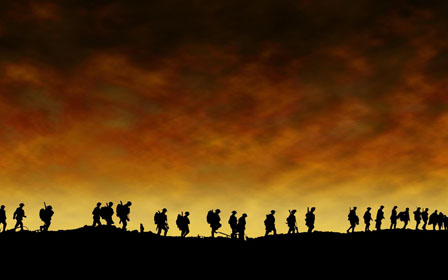
Introduction
While the shots fired at Lexington and Concord were known as the “shots heard around the world,” the shot that killed Archduke Franz Ferdinand launched the world into war. Between the Allies and the Central Powers, over 30 nations declared war during World War I. The war ravaged Europe on both the eastern and western fronts. There was also fighting in Africa and the Middle East. Over 16 million people were killed in the four-year war. The United States only participated in World War I for just about 18 months, but the lost generation helped lead the Allied forces to victory.
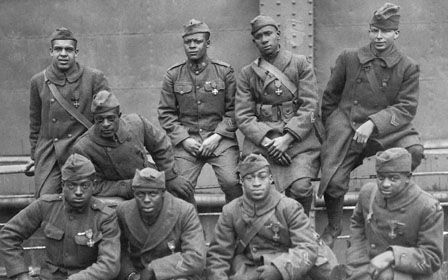
Background Knowledge
As the United States focused on social change during the Progressive Era, countries in Europe found ways to work together and formed coalitions across the continent. These alliance treaties assured these countries support in the event of an attack from outside of the alliance. First to form was the Triple Alliance among Germany, Austria-Hungary, and Italy in 1882. This relationship is known to be the Central Powers. The Triple Entente, known as the Allies, originally consisted of France, Britain, and Russia.
On June 28, 1914, Archduke Franz Ferdinand, heir to the Austro-Hungarian Empire, was killed by a Serbian man. Backed by Russia, Serbia prepared for war. Austria-Hungary looked for an ally in Germany before declaring war on Serbia on July 28. 1914. War raged for almost three years before the United States joined the Allied forces. President Woodrow Wilson chose a position of neutrality and continued to trade with both Allied countries and the Central Powers. The majority of Americans supported this position, and America stayed out of the war.
Germany took the tactical lead and also took the war to the seas, declaring unrestricted submarine warfare. German U-Boats sank many commercial vessels around the British Isles, including American-flagged ships. American opinion turned against Germany when the British ocean liner, the Lusitania, was torpedoed on May 7, 1915, on its way from New York to England with more than 120 Americans on board. Germany continued to attack ocean liners with civilian passengers after pledging to end the unrestricted submarine warfare. In early 1917, Germany resumed its unlimited submarine attacks and sank more American ships. The United States Congress ended diplomatic relations with Germany in February and entered the war in April of 1917.
American troops arrived in the European theater in June of 1917 and first saw combat in October in France. Then, in December of 1917, the United States formally declared war against Austria-Hungary.
World War I ended at the 11th hour on the 11th day of the 11th month of 1918 when Germany signed an armistice agreement with the Allied forces. The formal end of the war was the Treaty of Versailles in June of 1919.
World War I is known for its war tactics and military innovation. Trench warfare was a hallmark of the war. Armies dug and fortified trenches on either side of the battlefield. They would bomb and shoot across the battlefield at each other. Trenches required fewer soldiers and were inexpensive to build. WWI was also the first time that airplanes were used in combat. For the first time, machine guns were used against Allied forces at the Battle of the Somme. At the same battle, British troops used tanks for the first time. Tanks were meant to safely cross No Man's Land (the area on the battlefield between trenches) and break through the enemy's trench system. Poison gas was also used to breach the relative safety of the trench system.
World War I changed the landscape of Europe. Four empires collapsed, including the Ottoman Empire and the Austro-Hungarian Empire, and five new nations emerged - including Finland and Poland. There were also two Russian revolutions, ending in 1917 with Lenin in power. Germany lost land, and its Army was demobilized and restructured with restrictions. The Treaty of Versailles spelled precisely how many men could serve in the military and exactly how the military should be structured. The manufacturing of arms, munitions, and other war materials was also limited and its production was prescribed by the treaty. In addition, importation of war materials was prohibited.
The United States left the war as a global power in military and industry. Unlike in Europe, war never came to US soil, so there was no damage and destruction to rebuild. American casualties were much lower than other Allied nations because America was only engaged in the war for about 18 months. Women became more influential in society after taking on jobs outside of the home as the men went off to war. Liberty Bonds introduced Americans to the idea of investment. The war was also a spark for the Great Migration as African American soldiers returned from war and began to question their unequal treatment in their Southern towns and cities.
World War I also marked the end of the decade and what would be the end of an era in American history.
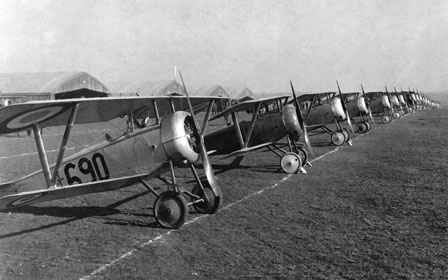
ACTIVITIES
Selective List of Books
- Shooting at the Stars by John Hendrix (ISBN 9781419711756)
- On Christmas Eve of 1914, there was a ceasefire between the French and German soldiers. The soldiers met in No Man's Land, the area between the trenches, exchanged trinkets and sang together to celebrate the holiday.
- Learn more about holidays during WWI here.
- Finding Winnie: The True Story of the World's Most Famous Bear by Lindsay Mattick (ISBN 9780316324908)
- In 1914, a young veterinarian bought a small bear from a trapper in Ontario. This vet, Harry Colebourn, named the bear Winnie after Winnipeg, Canada. He brought Winnie across the Atlantic on the SS Manitou. She became the mascot for his unit. When Harry left for France, he sent Winnie to the London Zoo. When he returned from the front, Harry saw how settled and happy Winnie was at the zoo and left her there. A small boy visited Winnie at the zoo. His name was Christopher Robin.
- Analyze primary source photographs using this tool. Ryerson University created a great site with pictures, diaries, maps, and essays. The interactive activity is an excellent curation of all of the resources.
- Extend the story throughout the curriculum with this teachers' guide.
- Learn more about how animals are used in war.
- Where the Poppies Now Grow by Hilary Ann Robinson (ISBN 9780957124585)
- The Patriotic Poppies is an excellent resource about the poppy that incorporates "In Flanders Field" by Lt. Colonel John McCrae.
-
Veterans' Affairs Canada has an excellent activity where students can learn about remembrance symbols. Students can brainstorm and develop a remembrance symbol for World War I.
- Technology Approach: Use Google Slides (TeachersFirst review) to create a presentation about the symbol chosen.
- Non-technology Approach: Create a poster or a replica of the symbol chosen. Use basic arts and crafts supplies or try to make 3D objects using paper mache.
- Treaties, Trenches, Mud and Blood by Nathan Hale (ISBN 9781419708084)
- Nathan Hale's Hazardous Tales are a great way to get students interested in history.
- Use this classroom guide to help implement graphic novels into the classroom.
-
Encourage students to create their own historical fiction graphic novels.
- Technology Approach: Use Canva (TeachersFirst review) to create comic strips to tell a historical story.
- Non-technology Approach: Canva also has printable templates so students can use art supplies to create their comic strips.
- Take a virtual field trip to the American Numismatic Association to learn more about the war, "From Trenches to Treaties".
- War Horse by Michael Morpurgo (ISBN 9780439796644)
- Joey is a farm horse sold to the British Army. The story takes the reader through Joey's experiences in war and the people he meets along the way.
- This British education-based site has great cross-curricular activity suggestions and discussion questions.
- The stage production of War Horse also has great crosscurriuluar activity suggestions as well as links to primary sources to learn more about how horses were used in WWI.
- Dazzle Ships by Chris Barton (ISBN 9781512410143)
- Dazzle ships are ships that were painted to try and confuse the enemy. After the many ship casualties during WWI, the American and British navies repainted ships with intricate geometric designs. These designs confounded the Germans because they could not quickly determine the ship's speed or direction. The camouflage also distorted the size and profile of the ship.
- The Mystic Seaport Aquarium gives more information about Dazzle Ships.
- The National Museum of the Marine Corps encourages students to design a Dazzle Ship. Transform this into an activity with a technology approach by setting the provided ship outline as the background of a Google Slide, and students can add shapes and colors to create a digital Dazzle Ship.
- The Imperial War Museum has created a video to explain Dazzle Ships.
- Chris Barton, the book's author, provides two resources for educators to supplement his book.
- The American Association of School Libraries has an article about pairing the book with primary sources. Look here for more information, including links to primary sources, many of which were curated from the Library of Congress.
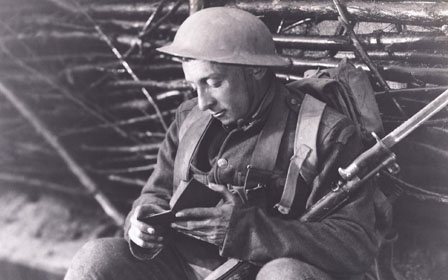
EXTENSIONS
-
Letters from Home
- The only communication between soldiers and their families during WWI was via letter. The National WWI Museum has a fantastic Letters from Home plan where students analyze primary sources and use them to write letters home. Modernize this plan by adapting the lesson to include emails and social media posts. What would letters be like if the writer only had 280 characters?
-
Silent Movies
- Charlie Chaplin released his first silent movie in 1914. While he never enlisted in the military and never went to war, he contributed to the war effort by making films. Learn more about his films here. Watch an excerpt of 1918's Shoulder Arms. Students can create their own silent films to entertain modern troops. Try VMaker (TeachersFirst review) or Adobe Express Video Maker (TeachersFirst review).
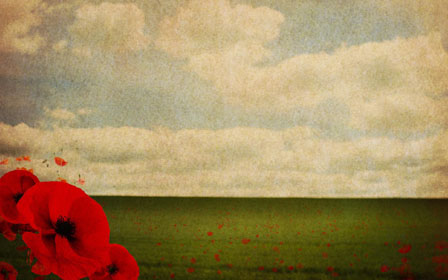
CORRELATION TO STANDARDS
-
AASL National School Library Standards
- Inquire Shared Foundation, Think Domain - Learners display curiosity and initiative by: 1. Formulating questions about a personal interest or a curricular topic. 2. Recalling prior and background knowledge as context for new meaning
- Inquire Shared Foundation, Grow Domain - Learners participate in an ongoing inquiry-based process by: 1. Continually seeking knowledge
- Include Shared Foundation, Create Domain - Learners adjust their awareness of the global learning community by: 2. Evaluating a variety of perspectives during learning activities
- Include Shared Foundation, Grow Domain - Learners demonstrate empathy and equity in knowledge building within the global learning community by: 2. Demonstrating interest in other perspectives during learning activities
- Curate Shared Foundation, Create Domain - Learners gather information appropriate to the task by: 2. Collecting information representing diverse perspectives
- Explore Shared Foundation, Think Domain - Learners develop and satisfy personal curiosity by: 1. Reading widely and deeply in multiple formats and write and create for a variety of purposes. 2. Reflecting and questioning assumptions and possible misconceptions.
- Explore Shared Foundation, Share Domain - Learners engage with the learning community by: 1. Expressing curiosity about a topic of personal interest or curricular relevance
- ISTE Standards for Students
- Knowledge Constructor - 3d. Students build knowledge by actively exploring real-world issues and problems, developing ideas and theories and pursuing answers and solutions.
